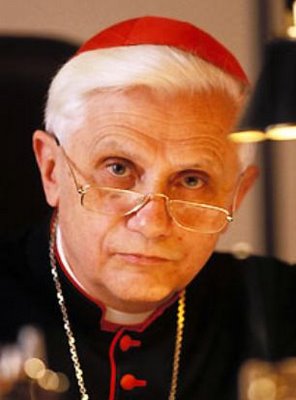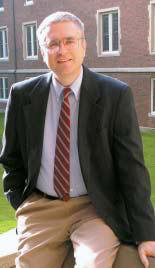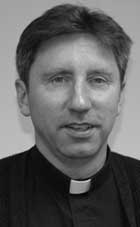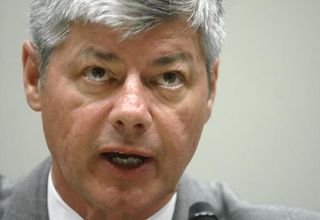 Welcome readers of The Anchoress and Andrew Sullivan.
Welcome readers of The Anchoress and Andrew Sullivan.
See also: EVIL MONSTER UPDATE: THE INSIDE STORY.
The level of vitriol being directed at Pope Benedict by the mainstream media right now is truly extraordinary. It’s primarily drive by desire for cash (scandal sells), followed closely by hatred, along with a hefty dose of ignorance.
Reading Maureen Dowd’s latest opinion column is just a cringe-inducing experience.
Even in ostensible news pieces the misrepresentation of facts is staggering. That’s where the ignorance comes in. Reporters in the mainstream media are seldom well versed in the matters they are reporting on, and it is clear that—even when outright malice is excluded from the equation—they simply do not have the background to properly understand or report on how the Vatican works and what its actions mean.
I am not saying that the Holy See’s handling of abuse cases can’t be legitimately criticized. I’m not saying that then-Cardinal Ratzinger/now-Pope Benedict XVI didn’t experience a learning curve on this point. And I don’t know what else is out there that remains to be discovered.
But I am saying that the media is getting this story wrong, particularly in the case of Fr. Lawrence Murphy, the American priest whose case was dealt with by the Congregation for the Doctrine of the Faith when Cardinal Ratzinger was its head.
The New York Times has done a great service to those wanting to look into this story by putting online a large number of primary source documents pertaining to the case. No doubt they mean these to incriminate Pope Benedict, but if you read them carefully—and if you know the relevant background—they don’t. (The documents are also posted here in .pdf format.)
So let’s look at the facts of the case in light of the documents:
Lawrence Murphy was born in 1925 and was ordained a priest in 1950. He served at St. John’s School for the Deaf from 1963 to 1974, during which time he later admitted to having abused 19 boys (press reports are saying as many as 200, but there is speculation involved there).
In the mid 1970s his victims complained to the police, but this did not result in a trial.
Note well: This is not a case of the diocese preventing the police from knowing about it. They already knew.
His victims also hung “most wanted” posters of him outside Milwaukee’s cathedral to urge Church authorities to deal with the situation. According to a document from the 1990s produced in preparation for a Church trial, virtually no documentation was available on the details of what the Milwaukee archdiocese did regarding the case back in the 1970s, but the result is known in broad brush.
Murphy was removed from the school for the deaf and given no further pastoral assignment. He moved back to his family residence, where he lived with his mother. Except for occasional visits to his brother in Houston, he lived in this house for the rest of his life.
He was never granted a pastoral assignment by the diocese of Superior, in which he was now living, but he occasionally said Mass at parishes and was used in some capacity at retreats for deaf people, due to his ability to communicate in sign language.
There were no further allegations of sexual abuse against him.
In 1995, some of Murphy’s victims and their lawyers contacted the now-archbishop of Milwaukee, Rembert Weakland (ironic, yes, but that’s a different issue), reporting Murphy’s actions from the 1970s.
In December of 1995, Weakland ordered a preliminary investigation to determine whether the allegations had merit. It was concluded that they did.
However, because the charges against Murphy included the abuse of the sacrament of confession—an offense that was (and is) reserved to the Congregation for the Doctrine of the Faith—Weakland wrote to Cardinal Ratzinger in July 1996 asking for guidance in how to proceed.
Note this well: Back in 1996 the CDF did not have a mandate to handle cases of sexual abuse by priests. It does now. It received that mandate later. But in 1996 it did not have one. The reason that Weakland notified the CDF was not because the abuse of minors was involved but because the abuse of the sacrament of confession was involved.
Weakland had not received a reply by October of 1996, and he began preparations for a canonical trial of Murphy.
In February 1997 Murphy raised the point that his crimes were committed before the 1983 Code of Canon Law was issued and that under the legal norms in force at the time, the statute of limitations had run out.
This caused Weakland to contact the Holy See with a request that the statute of limitations be waived so that the trial could proceed. He sent the request in March 1997 to the Apostolic Signatura, noting that he hadn’t heard from the CDF.
Since the case involved offenses reserved to the CDF, the Signatura promptly forwarded the request there, and within two weeks Weakland had a reply from the CDF.
The reply came from the secretary of the congregation, (now Cardinal) Tarcisio Bertone.
Here are two important points:
1) The delay in response. Weakland first wrote to the CDF in July 1996. He got his reply (after a further prompting) in March 1997—nine months later.
If you want to criticize, here is a possible thing to criticize. The CDF could have gotten back to him in a more timely manner. On the other hand, the CDF does not have a huge staff but it does have a huge mission as the Church’s theological quality control department. I think this one is debatable.
2) Note that the reply came from Bertone, not Ratzinger. This is actually what you would expect. The way these dicasteries work, while the Cardinal Prefect (Ratzinger, in this case) is in charge, it is the Secretary (Bertone) who is the actual “show-runner”—the one who oversees the day-to-day functioning of the department. So while you would write to Ratzinger as a matter of protocol, you would expect him to hand the matter off to Bertone and to hear back from the latter. Indeed, after deference to Ratzinger has been paid by writing the first letter to him, Weakland and Bishop Fliss of Superior correspond directly with Bertone.
This creates a situation where we don’t really know what Ratzinger’s involvement was. In the documentation presented by the New York Times Ratzinger never replies. It’s always Bertone who does so. Bertone (not Ratzinger) even chairs a meeting at the Vatican on the matter.
Did Cardinal Ratzinger even see the initial letter regarding Murphy? Maybe. Or maybe it was given to Bertone as part of his role as show-runner. Maybe the mail room at the CDF automatically gives correspondence addressed to the Cardinal Prefect to the Secretary, who serves as his filter. I don’t know. (Maybe someone who knows such things can clarify in the combox. Please cite sources.)
Incidentally, note that in his statement, press spokesman Fr. Federico Lombardi carefully and repeatedly talks about what “the Congregation” did regarding the Murphy case, not what Cardinal Ratzinger did.
Guess why.
So we don’t know if Ratzinger saw the letter, or if he was told about it, or what if anything he did.
That’s important to how we evaluate the story. Criticize the way these departments are run if you want, but we don’t have evidence that Ratzinger did anything in bad conscience.
He’s also been the leading change-agent pressing for tougher measures against abusive priests for nearly ten years.
So what did Bertone say in his reply to Weakland’s request for a waiver of the statute of limitations? He said for Weakland to continue the judicial process against Murphy, thus waiving the statute of limitations, while asking him to pay attention to certain prior norms that must be read in light of current law.
In other words, Bertone said, “Go ahead. Prosecute.”
Scarcely anything to fault Ratzinger for here.
So things proceed with the potential canonical trial of Murphy until January 1998 (by which time the case had been transferred to the Diocese of Superior, Wisconsin, in whose territory Murphy was residing). In this month, Murphy writes his own letter to the CDF.
As you’d expect, he addresses it to Cardinal Ratzinger, and as as you’d expect, Bishop Fliss of Superior (now handling the case) gets a reply from Bertone.
This is the crux letter—where people in the press want to find fault with Cardinal Ratzinger.
There are, again, a number of important things to note:
1) The text of the Murphy letter itself. Mainstream media sources will quote only a sound bite or two (at best; some flat-out misrepresent it), but thanks to the Internet and the NYT’s putting the document online, you can read it for yourself and make your own judgments.
HERE IT IS.
2) In the letter, Murphy asks the CDF to declare the action of the diocese of Superior (to whom the case has been transferred) invalid because the statute to limitations when the crimes were committed has passed. The CDF refuses to do so in Bertone’s reply and suggests that the case be handled in another way (more on that in a moment). The point is: The CDF refuses to invalidate the pending action of the diocese of Superior against Murphy. No ground of faulting Ratzinger there.
3) Murphy also makes a mercy-based request to the CDF not to be subjected to a trial at this point in his life. He writes:
I am seventy-two years of age, your Eminence [Cardinal Ratzinger], and I am in poor health. I have just recently suffered another stroke which has left me in a weakened state. I have followed all the directives of both Archbishop Cousins and now Archbishop Weakland. I have repented of any of my past transgressions, and have been living peaceably in northern Wisconsin for twenty-four years. I simply want to live out the time that I have left in the dignity of my priesthood.
So when the response came from Archbishop Bertone, what did it say?
It did not prohibit a canonical trial. It didn’t say that this couldn’t be done. But it did hint at another path, saying:
[T]his Congregation invites Your Excellency [Raphael Michael Fliss of Superior, WI] to give careful consideration to what canon 1341 proposes as pastoral measures destined to obtain the reparation of scandal and the restoration of justice.
Canon 1341 provides that:
An ordinary is to take care to initiate a judicial or administrative process to impose or declare penalties only after he has ascertained that fraternal correction or rebuke or other means of pastoral solicitude cannot sufficiently repair the scandal, restore justice, reform the offender.
So Bertone urges the relevant ordinary (now Fliss due to the change of diocese in which the trial would occur) to heed what the Code of Canon Law says regarding when to use a judicial process. Criticize the Code if you want, but we don’t have evidence of wrongdoing on Ratzinger’s part.
Note that Bertone doesn’t say Fliss can’t or shouldn’t go forward with the trial. He just says think about this canon and if there is another way to resolve the matter.
In May Fliss concluded that the scandal in the deaf community was such that the trial needed to go forward.
At the very end of the same month, he and Weakland were in Rome for their ad limina visit, and they had a meeting with Bertone about the Murphy case. Ratzinger was not present.
Bertone again did not say that the trial could not proceed. He pointed out certain canonical and practical difficulties it would involve, but he did not prohibit it. He further recommended that Murphy be examined by three psychiatrists, that he be assigned a spiritual director to keep tabs on him, that he be prohibited from doing anything with the deaf community, and that he be allowed to celebrate Mass only with permission given in writing by both Weakland and Fliss.
This seems to be the last action the CDF took on the matter—except for forwarding the minutes of the meeting a few weeks later (July 1998).
The next month, August 1998, Murphy died.
He really was in poor health.
Murphy had written his letter of appeal—the crux letter that the media is up in arms about—in January of 1998 and in August of 1998 he was dead.
One can fault any number of things about process or policy in this case, but we don’t have evidence that Ratzinger did anything in bad conscience. He didn’t stop the trial against Murphy from proceeding. At most (attributing everything to him that Bertone did) he recommended waiving the judicial proceeding due to the man’s advanced age and ill health while simultaneously taking steps to ensure that the man would not be a threat to anyone as he lived out his final months in seclusion.
Civil prosecutors make these kinds of judgments all the time, deciding whether it is really worth it to devote the resources to proceed to a full trial when the accused is elderly, not a threat, and likely to die during the proceedings.
They aren’t portrayed in the press as evil monsters, and from the facts of this case, Pope Benedict shouldn’t either.
Your thoughts?







